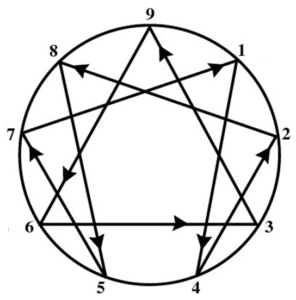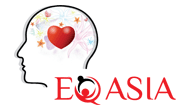 The Enneagram is a powerful and dynamic personality system that describes nine distinct and fundamentally different patterns of thinking, feeling and acting. The tool enables individuals within organizations to understand their own and others’ motivations and behavior patterns, and to communicate and work more effectively with each other.
The Enneagram is a powerful and dynamic personality system that describes nine distinct and fundamentally different patterns of thinking, feeling and acting. The tool enables individuals within organizations to understand their own and others’ motivations and behavior patterns, and to communicate and work more effectively with each other.
The word “ennea” is Greek for nine and “gram” means model or figure. Hence, the Enneagram is a diagram or star with nine points representing the nine personality patterns. Each of these nine patterns is based on an explicit set of perceptual filters that determine our worldview. Underneath each of the nine patterns is a basic proposition or belief about what you need in life for survival and satisfaction.
The Enneagram demonstrates different points of view, strengths, limitations and communication styles for each of the nine types. It also helps team members learn how to prevent and handle conflicts, work with their blind spots and become more effective leaders. As you discover your personality type and the underlying basic proposition, you also will discover what motivates you, your coping strategy and keys to personal development.
Basic Questions About The Enneagram
1. What is the Enneagram useful for?
The Enneagram is mainly a diagnostic tool of one’s emotional outlook on life. It will not cure one’s problems, but may help point out their underlying fixations. It is also useful as a guide to how other people see the world differently. The Enneagram has become particularly popular within the self-help and personal growth movements, but other professions use it as well, including therapists, teachers, psychologists, managers, and businesspeople.
2. Don’t people’s personalities change all the time?
I have not heard of anyone’s Enneagram type changing after early childhood, though I can’t rule out the possibility. Most often, what changes is one’s understanding of the personality one had all along. Major life changes most often involve discovery of inner strengths, and admission of weaknesses, that one actually had all along.
3. Doesn’t the Enneagram just put people into boxes?
Actually it’s the other way around, as Riso points out: the Enneagram shows you what boxes to get out of. Most people are not aware of their own fixations, or how powerfully they affect our consciousness.
4. Is one’s Enneagram type inherited?
Somewhat. Most twins are different Enneagram types, although many are adjacent types.
5. Is your Enneagram type your whole personality?
No, even though well-meaning, enthusiastic Enneagrammers may give that impression. Tom Condon has remarked that one’s Enneagram type is analogous to one’s national origin – i.e. it is part of one’s identity, while still leaving considerable room for individual variation.
6. Do the personality types have a corresponding compatible personality type?
Yes and No. “Yes” in the sense that some types share common characteristics, as for example a One with a Two wing and a Two with a One wing. Another example is a Seven and One can “meet” at either Seven or One. “No” in the sense that any two types can be compatible as long as they are relatively healthy individuals.
As a practical matter, and perhaps more often then not, types that are adjacent to one another on the circle, as in the example above with Points One and Two, will relate well together because of the compatibility inherent in the characteristics of type which they share.
Contact us to benefit from this profiling tool.
